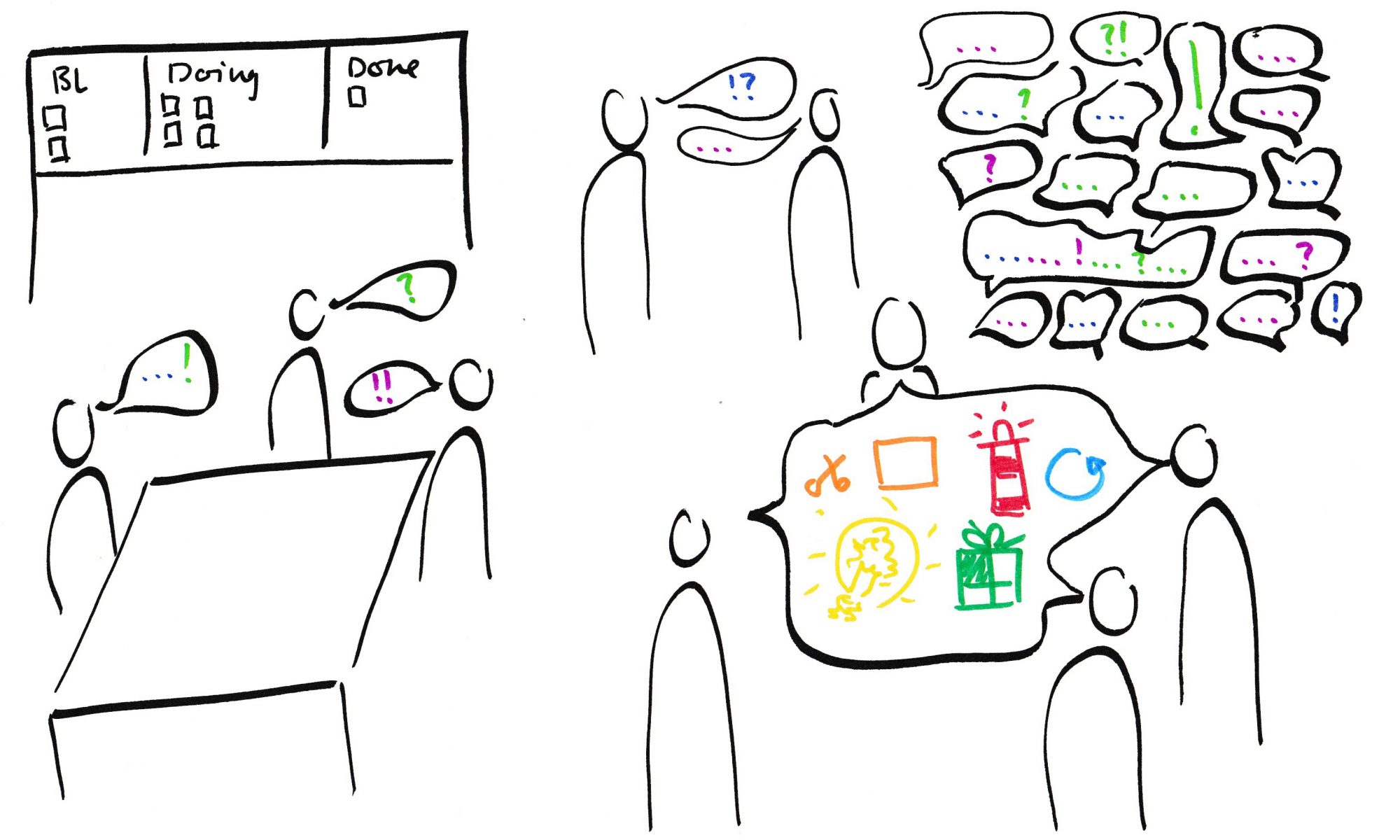I let my Students at a University of Applied Sciences work with Scrum for one semester. My learning is, that you can apply Scrum in very different contexts, because its simple rules make self-organization feasible and the transparency gives a good bases for communication.
I wrote about how I introduced Scrum to my students here and how they worked with it here. Now I will briefly reflect on how it worked out. I admit it right away: It was more time-consuming and you probably will be way out you comfort zone. You have to give up control and you cannot know what will happen. But then: Can you ever? But this isn’t so bad: They are adults and responsible for their learning. My job as a lecturer is to provide them with assignments and materials and to be there for them as a coach. Also, my job is to make them feel safe and to facilitate their work and communication. And they really did great.
There is this question of whether to apply agile methods outside of IT. If you read the Scrum Guide, although it never states to be exclusively for software development, it was meant to be for software development. And although a Scrum Master shouldn’t tell the team how to do the developing work but only coach them on collaboration and removing impediments job descriptions for Scrum Masters always are looking for software developers.
The Agile Manifesto actually is captioned „Manifesto for Agile Software Development“. It has spread out over software development but usually still starts at the IT-departments of an organization. A couple of days ago a listend to a Q&A-Session with Alistair Cockburn at the Agile GOTO Night and he said that some creators of the Manifesto didn’t like that other areas adapt it to their purposes. But in his opinion something like the Manifesto stays unknown or is well-known and if it becomes well-known people will use and adapt it. And he seemed to be happy with this.
What goes for the Agile Manifesto probably also goes for Scrum: I think that the Scrum framework really is great because of its simplicity. And things that really are great usually will grow beyond their original intentions. As adaptability is one of the very aims of Agile and Scrum is one of the most famous agile frameworks I suggest it is only natural to use it in other contexts. What I did with my students was a pretty literal adaption of Scrum. There where only few changes and they weren’t changes at the level of the framework but rather given to circumstances. For example: We had sprints of three weeks (which is ok with Scrum), but of course, the students worked only for a few hours because they had other courses and work to attend to. Also, we couldn’t do a Daily Scrum since we didn’t meet but once a week.
Scrum has some rather rigid rules and in my experience this helps a lot: Self-organization is never floating free but even for my students who self-organize all the time it was good to have something to hold on to. And that’s true for practitioners as well: Several Scrum Masters in software development told me, that it was really good to have that rigid framework. It helps people to focus on what is really important and gives some barriers in-between to self-organize. Also, it can prove helpful if you need to tell management about impediments because it gives a clear outline on how it optimally would have to be to work.
In my personal experience what Scrum really does: It not only demands communication (in the team and between team and stakeholders / management) but it also generates it. By its events (Sprint Planning, Daily Scrum, Sprint Review, Sprint Retrospective) and by helping out with some tools and environments like the Scrum board (which by the way the Scrum Guide doesn’t dictate) or the collocated teams conversing informal and face-to-face.
As I mentioned before: My students did very well. They seemed more committed and satisfied, they produced more creative output and they were a lot more involved. I am really happy I did this and I encourage everybody to do some experiments with agile frameworks where ever they seem to be useful.
